By
Ahmad El-Muhammady
1. Introduction
There are several ways to understand the phenomenon of terrorism. One can examine terrorism from social, political, economic, psychological and religious point of views. However, one of the most viable means to understand this phenomenon is from the perspective of radicalisation. Radicalisation basically refers to the process of how a person acquires radical-extremist ideas and acts based on that ideas. Radicalisation assumes that a person was neither born a terrorist nor suddenly turned to become a terrorist overnight. It posits that a person usually would go through a certain process and live within a certain ecosystem before determined to take up a weapon and kill others. Clearly, this perspective is useful for us to understand the shooter in the Christchurch mosque shootings in New Zealand. Interestingly, even Bretton Tarrant himself discussed his radicalisation trajectory after being awakened by harsh realities of “great replacement” resulting from immigrations occurred in the Western world.[1]
Thus, in order to discuss this issue, this article is divided into four parts. The first part provides an overview of the event that is the Christchurch mosque shootings in New Zealand. The second part focuses on conceptualising radicalisation, including the nature, ecosystem, phases and indicators. Third part discusses the motive of the attacks as expounded by the shooter. The fourth part focuses on Bretton Tarrant’s personality as an actor in the attack. The data for this analysis is obtained from Tarrant’s manifesto The Great Replacement, court document, news reports of interviews with his family and friends and information that surfaced during his trial.
2. Christchurch Mosque Shootings, March 15 2019
The shootings were performed by a lone actor, Brenton Harrison Tarrant, a twenty-eight years old Australian residing in New Zealand. The shootings started at 1.40pm Friday afternoon, when Muslim community gathered in Al-Nour mosque, in the suburb of Ricarton, to perform Friday prayer. The shootings were livestreamed through his Facebook page showing he performed the entire attacks. Tarrant deliberately chooses Friday prayer gathering to maximize casualties and Al-Nour mosque as target due to the presence of majority adult worshippers, the mosque was originally a church which in his view was an act of desecration, and it has a history of extremism.[2] After completing his first attacks at Al Nour Mosque, Tarrant drove to Linwood Islamic Centre and performed another round of attacks. In totality, 51 were killed and 40 individuals injured in that shootings.[3]
Tarrant was the first person charged under New Zealand’s Terrorism Suppression Act 2002 (Section 6A).[4] He “faces 51 charges of murder and 40 of attempted murder.”[5] On 17 August 2020, the Court sentenced him to life imprisonment without parole. The verdict reads: “Brenton Harrison Tarrant, you are for sentence this morning for the murder of 51 people and for your attempt to murder 40 other individuals. You are also to be sentenced for engaging in a terrorist act on 15 March last year.”[6] Tarrant did not show any repentance and remained emotionless throughout the trial, including the during impact statements by the family of the victims.
3. The Motives
“Why did you carry out the attack?” is one of the questions Tarrant sought to answer in his 87-page manifesto The Great Replacement. In this work, he outlines thirteen points why the attack was conducted. In this work, Tarrant recurrently used the word “invaders” which he specifically refers to foreigners, particularly Muslim immigrants who migrated and stay in European countries. The motives of the attacks are as follows:
- To take revenge on the invaders for the death of thousands of people in European lands throughout history
- To take revenge for the enslavement of millions of Europeans taken from their lands by the invaders.
- To take revenge for the thousands of lives lost to terror attacks throughout Europe.
- To take revenge for Ebba Akerlund
- To directly reduce immigration rates to European lands through intimidation and physical removal of the invaders.
- To agitate political enemies of my people into action
- To incite violence, retaliation and further divide between the European people and the invaders.
- To avenge those European men and women lost in an ending wars throughout European history
- To demonstrate the effect of direction action, and providing a lightning path forward for those that wish to follow.
- To create the atmosphere of fear and change
- To add momentum to the pendulum swing of history further destabilising and polarizing western society in order to eventually destroy the current nihilistic, hedonistic, individualistic insanity that has taken control of Western thought.
- To drive wedge between the nations of NATO that are European and the Turks.
- To create conflict between two ideologies within the United States on the ownership of firearms in order to further the social, cultural, political and racial divide with the United States.[7]
The motive reflects the actor’s worldview and combination of cognitive, emotive, faith and action-oriented radicalisation. Detailed explanations of these elements are discussed in radicalisation conceptual framework in the next paragraph.
4. Radicalisation: Conceptual Framework
As stated earlier, radicalisation perspective will be employed to analyse the terrorist actor, Brenton Tarrant. Thus, in order to do so, it is imperative for us to understand the meaning of radicalisation.
Radicalisation can be defined as the “process of adopting an extremist ideology and translating into a violent act or committing the act of terrorism.”[8] In this context, adoption refers to “the process of learning and deepening of an extremist ideology or narratives, cognitively, emotionally and spiritually until it becomes part of his or her belief and conviction.” However, it is important to note that adopting extremist ideas does not make a person terrorist, unless the person translates the ideas into violent acts.[9] Thus, converting ideas or words into action constitutes an important process of terrorist radicalisation. A recent study suggests that radicalisation comprises of four dimensions as follows:
- cognitive-oriented radicalisation: The use of reason, logic, rationalisation to justify acceptance of violence. It occurs at the mental level, and it may or may not be translated into violence.
- emotive-oriented radicalisation: The use of emotive justification to justify acceptance and tolerance to violence. Emotive elements: anger, revenge, humiliation, sense to ‘get even’. It occurs at the emotive-level and it may or may not be translated into violence.
- faith-oriented radicalisation: The use of faith and spiritual justification to justify acceptance and tolerance to violence. It occurs at the faith-level, and it may or may not be translated into violence.
- action-oriented radicalisation: The use of action to commit violence, act of terrorism. It is the cumulative effects of one or more elements of cognitive, emotive and conviction that generates violence.[10] See the Diagram 1.1. below.
| Cognitive-Oriented Radicalisation | Emotive-Oriented Radicalisation |
| Action-Oriented Radicalisation | Faith-Oriented Radicalisation |
Diagram 1.1 shows four quadrants of radicalisation. Red (Violence), Green (Non-Violence).
It is important to note that the first three orientations are non-violent in nature, because it exists at the cognitive, emotion, and faith levels. Unless those elements are converted into an act. Radicalisation, therefore, can be said occurs at two levels at least, cognitive level and manifests in the form of violent acts.
Phases of Radicalisation
Phases of radicalisation refers to the stages or phases that a person goes through from his pre-radicalisation life to the actualisation stage, i.e. the commission of violent acts. In this context, five stages of radicalisation are proposed to analyse Brenton Tarrant. (1) pre-radicalisation (2) exposure (3) internalisation (4) externalisation and (5) actualisation.
Stage 1: Pre-radicalization: Pre-radicalisation life refers to the actor’s life before their engagement with terrorism.[11] It focuses on ‘who-is-he?’ question. In terrorism investigation, investigators usually devoted so much time and resources to construct this period, by looking at the actor’s background, particularly the family background, upbringing, education, associates and friends, association, club, organisation, social circle, hobby and interest, social media engagement, level of religious education, and any relevant information. Investigation into the ‘preradicalisation life’ involves interviewing the subject, parents, friends, colleagues and visiting subjects’ locations.
Stage 2: Exposure: The exposure stage is conceived as the actor’s first contact with radical-extremist ideas, experience and individual (recruiters) that left the most memorable, lasting, powerful impacts that change a person to be receptive to extremist narratives. However, it is common that most people will turn away from that narratives the first time they come into contact with it. Three possible scenarios would usually occur when a person comes into contact with the extremist narratives, they would either reject, immediately accept, or they would take some time to think about it before deciding the next course of action, i.e. accept or reject.
Stage 3: Internalisation: Internalisation stage occurs when the actor is receptive to the ideas and continues learning more to understand that ideas. At this stage, more overt behavioral change can be observed such as exhibits deepening of interest in learning events, ideas, and individuals related to extremism and militancy; exhibits high inquisitiveness to extremist discourse; collecting data and materials related to extremism and militancy (images, videos, audio, reading materials); the subject undergoes self-radicalisation: self-initiated radicalisation; change of behavioural pattern: gravitate to extremism discourse, physical appearance; change of online activities: contacting like-minded individuals to obtain certain materials; regular and intensive contacts with the ‘introducer’ (recruiter) via social media and over-the-top (OTT) application (Telegram, Whatsapps); OTT is commonly used as the platform for information sharing and point of contact.
Stage 4: Externalisation: Externalisation stages occur when the actor starts to externalise the ideas or things that they have in mind, particularly to the closest persons. The changes are observables in the following manifestations: change of online activity: sharing (posting/reposting) in Facebook, Twitter, Instagram, blogs, Youtube, and other social media platform; collection of information and materials related to violent extremism; promotion of extremist narratives, ideology and discourse online or offline; initiating recruitment drive (online/offline); possession of materials; pledge of allegiance to support militant-terrorist groups.
Stage 5: Actualisation: Actualisation refers terrorism act or violent act committed based on his conviction. This also includes acquiring materials to perform an attack, preparation, providing support, recruiting members, and participating in actual attack. Actualisation is differentiated from externalisation, for externalisation primarily involves verbal expression rather than engaging in actual acts of terrorism. Actualisation is the ultimate criteria of terrorism.
Ecosystem of Radicalisation
In this discussion, ecosystem of radicalisation refers to the social, economic, political environment in which the actor lives and grows. This ecosystem could be classified into four level: family, domestic, regional and global levels. Thus, any variables that exist at the family, domestic, regional, and global levels that interact with the actor and thus shaping his radical worldviews are considered important push and pull factors that drive him to radicalisation. It is also important to note that cyberspace in which the actor is interacting with his likeminded are also considered part of terrorist ecosystem. It is common in the age of social media today that terrorist is taking advantage of this facilities to form its own community for discussion and meeting platform with the likeminded individuals.
The above framework that comprises the concept of radicalisation, its dimension, phases, indicators, and ecosystem will be employed to analyse the actor of the shootings in Christchurch attacks.
5. Profiling Brenton Tarrant: The Shooter
In profiling terrorist actors, usually four basic questions need to be sufficiently answered. First, who is the person? This requires knowledge of the person and his upbringing. Second, in what environment, ecosystem, socio-economic and political conditions that he lives?. Third, what is the trajectory of his radicalisation? And fourth, what are the indicators of his radicalisation? These four questions are usually sufficient to construct the profile of the actor.
In his manifesto The Great Replacement (2019), Tarrant provides the sketches about himself. Tarrant described himself as “just an ordinary white man, 28 years old”, who was born in “Australia”[12] to a working class, low-income family.”[13] His parents are “of Scottish, Irish and English stock”,[14] who worked as “a garbage collector, and his mother is a teacher.”[15] He also said that he has “a regular childhood, without any great issues” [16] and has “little interest in education during my schooling and barely achieving a passing grade.”[17] He grew up in a “modest workers cottage”. He also confessed that he is an “introvert person” and did not go through any university education, because according to him “I had no great interest in anything offered in the university to study.”[18]
Tarrant did not have a steady employment, but he did make “some money investing in Bitconnect, then used the money from investment to travel”[19] across Western Europe such as France, Spain, Portugal and others.[20] It is also reported that after the death of his father in 2010, he quit job and started traveling across Europe.[21] Tarrant writes that he used to work as “kebab removalist” or “remove kebab” a popular phrase among the Serb nationalist in Balkan and spread globally amongst neo-Nazi and alt-right referring to the ethnic cleansing of Muslims.
Commenting on his personality change, his grandmother told a journalist that “It’s only since he travelled overseas I think that boy has changed – completely to the boy we knew”.[22] In the view of his neighbours, Tarrant was “a friendly and nice” person.[23] Others described him as “a bit of a recluse”, “a loner” and “a quiet man who kept to himself and seemed to leave his home for months at a time”.[24]
What Radicalised Tarrant?
In his work The Great Replacement, Tarrant singled out three key events that changed his worldviews and formed determination to use the method of violence. The first event was the murder of Ebba Akerlund, 11 years old Swedish girl who was killed in a terrorist attack in Stockholm, Sweden on April 7 2017. He wrote “for some reasons, this (attack on Ebba Akelund) was different. The jaded cynicism with which I had greeted previous attacks didn’t eventuate… I could no longer turn my back on the violence. Something, this time was different.”[25] For him the attack that killed Ebba were “the attacks on my people, attacks on my culture, attacks on my faith and attacks on my soul. They would not be ignored.”[26] From a radicalisation perspective, this indicates the emotive-oriented radicalisation process.
Second event was the 2017 French general election. In this election, Tarrant saw the rise and victory of “a globalist, capitalist, egalitarian, an ex-investment banker with no national beliefs other than the pursuit of profit versus a milquetoast, feckless, civic nationalist, an uncontroversial figure who’s most brave and inspired idea resolved to the possible deportation of illegal immigrants.”[27] The former was presidential candidate Emmanuel Macron and the latter was Marine Le Pen of the National Front party. In this election, Macron defeated the nationalist candidate Le Pen, a person that Tarrant was hopeful to win and thus protecting the interest of the White and European people. Tarrant wrote “my despair set in. My belief in democratic solutions vanished.”[28] This narrative was a clear evidence of his rational-logical justification and his faith to certain core belief, that is the supremacy of the European people over their own soils. This cognitive- and faith-oriented radicalisation provides the foundation for his tolerance and adoption of violence.
The third motive or the “The final push” Tarrant wrote was “witnessing the state of French cities and towns being invaded by the non-Whites.”[29] For him, the news of the large presence of immigrants came to his knowledge much earlier. However, he was shocked to witness with his own eyes the pervasive presence of foreigners in French towns. He said “I found the stories not only true, but profoundly understated.”[30] He wrote further “In every French city, even every French town the invaders are there.”[31] The French, in his view, became a minority in his own country. Tarrant was gripped with the sense of hopelessness upon witnessing this state of affairs in France. He wrote: “why don’t somebody do something?”. He repeated the phrase three times, then changed it to “why don’t I do something?” instead. He said: “the spell broke, why don’t I do something?, why not me, if not me, then who?, why them when I could do it myself?”.[32] This thought process is a clear indication of radicalisation that occurs at the cognitive, emotive, and faith levels simultaneously, and it give strongest justification and unshakeable conviction to accomplish his “mission.”
In my view, this conviction remains throughout his detention and trial. This is indicated by his expressionless look throughout the trial and intermittent “smirk and grin” on his face when his victims gave testimonies.[33] He clearly showed little emotion and was unrepentant.[34]
These were three key events that changed his worldviews and propelled him to determination to take action all by himself. The discovery in France leads him to visit mass cemeteries “to bury the French and other European soldiers lost in the war that crippled Europe.” In this visit, he recounted his experience of being in the state of deep sorrow and hopelessness seeing so much sacrifice that generations of the past go to waste. “I pulled my rental car over and sat, staring at these crosses (at the cemetery) and contemplating how it was that despite these men and women’s sacrifice, despite their bravery, we had still fallen so far. I broke into tears, sobbing alone in the car, staring at the crosses, at the forgotten dead.”[35]
The above experience and observation led him to the sense of awakening and urgency to commit to a cause, a revolutionary cause in order to change the situation, to repel the “invaders” from conquering Europe.
From radicalisation point of view, Tarrant was the product of interaction between his perception of the world and the ecosystem in which he lives. This interaction coupled with his socio-economic background and growing out of a lower income group, lack of proper education, social class, generated dichotomous “us versus them” mindset. This mindset led him to be more reclusive that fits the personality of a “social outcast”. His tendency to choose unconventional way of investment is another clue to the nature of his personality and worldview.
Tarrant’s exposure to the radical discourse such as his reading on the terrorist attacks in Europe, the presence of large immigrants in Europe, economic exploitation of the business elites, and the lack of political will or nationalistic belief to protect European soils from the so-called “invaders” gravitates him more towards learning or internalising about the “crisis of great replacement” that Europe is experiencing as a result of mass migration from Muslim countries. Tarrant noted that he has conducted his own research over the years to search for the answers, “why this thing happened” and “why nobody takes action on this issue”. His internalisation process did not only occur at the cognitive level. He took the initiative to travel to Europe using the profits he invested in Bitconnect, to see and experience himself the events that are taking place in Europe; the events of mass migration which he described as “not only real but also profoundly understated.”[36]
His decision to reach out to others, particularly his likeminded such as “Knight Justiciar Breivik”[37] and “Knight Templars”[38] is a clear evidence of an externalisation process. It is common for radicalising person[39] to share his thought and observation with likeminded to create the common sense of belongingness, in-group vs out-group feelings, and sense of recognition of his cause. Similar observation can be made in the case of Islamic State (IS) followers. IS followers shared their thoughts in cyberspace such as Facebook postings, Twitter, including in Whatsapps and Telegram groups to strengthen their social bonding and indoctrination process.
Tarrant’s action on that day, 15 March 2019 constitutes the last process of the radicalisation cycle. The act was an affirmation of his conviction and two years of serious internalisation process and planning.[40] His determination to kill was founded upon cognitive, emotive, and faith-oriented radicalisation. Tarrant did provide rational justification for his action as mentioned earlier. He provided three key motives, rationally argued based on his logic. That rational justification, which we call it as cognitive-oriented radicalisation is also compounded with emotive-oriented radicalisation. His sense of anger and revenge is obvious. In answering the motive of his action, unbridled revenge and anger was cited as the key motive, not only the “invaders” or immigrants, but also to the business elites, politicians, civil societies, and any collaborators who promoted the discourse of diversity, equality, tolerance and conservatism.
However, interestingly Tarrant’s overt radicalisation indicators either in the form cognitive and behavioral changes did not trigger the alarm among the state’s intelligence agencies or intelligence communities in general across the world. Tarrant bought large cache of weapons, trained himself as shooter, engaged in radical community chat room online, donated funds to radical groups in Europe, and scouting the mosque in the area are clear indication of radicalisation or “what is going on in his mind.” It is possible that he did not fit the profile of terrorist that was – as the media often portrayed as claimed – largely dominated by Muslims. The intelligence community also being side-tracked focusing on the single target that Muslim terrorists, unaware that radicalisation and terrorism are not discriminatory in its choosing. Should Tarrant is a Muslim, most likely that he will be quickly identified. Clearly, the Christchurch mosque shootings in 2019 provided an opportunity for the intelligence community, the media and all stakeholders of peace to rethink the nature of violent extremism that we are facing now and beyond. Our failure to learn from this experience would be costly for humanity.
Conclusion
Radicalisation approach provides explanatory power to study and understand the actor of terrorism act. In this case, it is clear that Brenton Tarrant, the actor in the Christchurch mosque shootings went through a long radicalisation process, and most importantly he did show clear sign of radicalisation prior to the actual event on March 15 2019. However, due to the intelligence failure to detect this early warning signs, it led to the commission of terrorism acts, the worst case in the history of New Zealand. This tragedy also informed that besides the problem of violent extremism initiated by Islamic State (IS), al-Qaeda (AQ) and ethno-nationalist such as Liberation of Tamil Tiger Eelam (LTTE) and the likes, we also observe the rise of white supremacist and right-wings groups in the Western Hemisphere. The existence and presence of these two groups in our societies may generate escalation of ideological to physical clash. Again, our failure to act now in the form of long-term strategy can potentially cause serious trouble in the years to come.
About the Author
Ahmad El-Muhammady is a lecturer at the Department of Human Sciences, Centre for Foundation Studies, IIUM and counter-terrorism analyst in Malaysia.
[1] Brenton Tarrant, The Great Replacement, published online. 2019, 44-46.
[2] Ibid., 15.
[3] The Queen vs Brenton Harrison Tarrant, CRI-2019-009-2468 [2020] NZHC 2192.
[4] Part 2 (Suppression of Terrorism), 6A Terrorist Act (1) A person commits an offence who engages in a terrorist act (2) A person who commits a terrorist act is liable on conviction to imprisonment for life or a lesser term.
[5] National Stuff, “Accused mosque shooter now facing terrorism charge”, May 21 2019, at https://www.stuff.co.nz/national/christchurch-shooting/112896110/accused-mosque-shooter-facing-new-terrorism-charge (access 29 November 2020).
[6] The Queen vs Brenton Harrison Tarrant, CRI-2019-009-2468 [2020] NZHC 2192.
[7] Brenton Tarrant, The Great Replacement, published online. 2019, 7-8.
[8] Ahmad El-Muhammady, Radicalisation model: learning from Malaysian militant-extremists, in Rohan Gunaratna and Sabariah Hussin, Terrorist Deradicalisation in a Global Contexts: Success, Failure and Continuity, London: Routledge, 2020, 155.
[9] Ibid., 156.
[10] Adapted from Ahmad El-Muhammady, Radicalisation model: learning from Malaysian militant-extremists, in Rohan Gunaratna and Sabariah Hussin, Terrorist Deradicalisation in a Global Contexts: Success, Failure and Continuity, London: Routledge, 2020, 155
[11] Mitchell D. Silber and Arvin Bhatt, Radicalization in the West: The Homegrown Threat (New York: Police Department, City of New York, NYPD Intelligence Division, 2007).
[12] A news report specifically stated that he was born in “New South Wales, Australia”: BBC, “Christchurch mosque attack: Brenton Tarrant sentenced to life without parole”, 27 August 2020, at https://www.bbc.com/news/world-asia-53919624. (access 28 November 2020).
[13] Brenton Tarrant, The Great Replacement, published online. 2019, p. 6-7.
[14] Ibid., 6.
[15] BBC, “Christchurch mosque attack: Brenton Tarrant sentenced to life without parole”, 27 August 2020, at https://www.bbc.com/news/world-asia-53919624. (access 28 November 2020).
[16] Ibid., 7.
[17] Ibid., 7.
[18] Ibid., 7.
[19] Ibid., 7.
[20] Ibid., 7.
[21] BBC, “Christchurch mosque attack: Brenton Tarrant sentenced to life without parole”, 27 August 2020, at https://www.bbc.com/news/world-asia-53919624. (access 28 November 2020).
[22] BBC, “Christchurch mosque attack: Brenton Tarrant sentenced to life without parole”, 27 August 2020, at https://www.bbc.com/news/world-asia-53919624. (access 28 November 2020).
[23] Hamish McNeilly, Katie Kenny and Edward Gay, “Christchurch shooting accused Brenton Tarrant described as a ‘recluse’ by neighbours”, March 18 2019, at https://www.stuff.co.nz/national/111346747/christchurch-shooting-accused-brenton-tarrant-described-as-a-recluse-by-neighbours (access 29 November 2020).
[24] Hamish McNeilly, Katie Kenny and Edward Gay, “Christchurch shooting accused Brenton Tarrant described as a ‘recluse’ by neighbours”, March 18 2019, at https://www.stuff.co.nz/national/111346747/christchurch-shooting-accused-brenton-tarrant-described-as-a-recluse-by-neighbours (access 29 November 2020).
[25] Brenton Tarrant, The Great Replacement, published online. 2019, 9.
[26] Ibid.
[27] Ibid.
[28] Ibid.
[29] Brenton Tarrant, The Great Replacement, published online. 2019, 9.
[30] Ibid., 10.
[31] Ibid.
[32] Ibid., 11.
[33] The Times of Israel, “Anger as smirking Christchurch attack suspect pleads not guilty”, 14 June 2019, https://www.timesofisrael.com/anger-as-smirking-christchurch-attack-suspect-pleads-not-guilty/ (access 30 November 2020).
[34] Al-Jazeera, “New Zealand mosque attack suspect Brenton Tarrant grins in court”, 16 March 2029, https://www.aljazeera.com/news/2019/3/16/new-zealand-mosque-attack-suspect-brenton-tarrant-grins-in-court (access 30 November 2020).
[35] Ibid.
[36] Brenton Tarrant, The Great Replacement, published online. 2019, 10.
[37] Ibid., 23.
[38] Ibid., 12.
[39] “Radicalising person” I refer to the person who is undergoing the process of radicalisation, or the process of learning of radical belief system. The person is not fully radicalised, yet he is the learning process to becoming one.
[40] In The Great Replacement, he stated that two years period between beginning of April 2017 until the end of May 2019 (which he wrongly write 2017) was a formation years for him, (page 9).
References
Ahmad El-Muhammady, Radicalisation model: learning from Malaysian militant-extremists, in Rohan Gunaratna and Sabariah Hussin, Terrorist Deradicalisation in a Global Contexts: Success, Failure and Continuity, London: Routledge, 2020, 155.
Al-Jazeera, “New Zealand mosque attack suspect Brenton Tarrant grins in court”, 16 March 2029, https://www.aljazeera.com/news/2019/3/16/new-zealand-mosque-attack-suspect-brenton-tarrant-grins-in-court (access 30 November 2020).
Brenton Tarrant, The Great Replacement, published online. 2019, 44-46. BBC, “Christchurch mosque attack: Brenton Tarrant sentenced to life without parole”, 27 August 2020, at https://www.bbc.com/news/world-asia-53919624. (access 28 November 2020).
Hamish McNeilly, Katie Kenny and Edward Gay, “Christchurch shooting accused Brenton Tarrant described as a ‘recluse’ by neighbours”, March 18 2019, at https://www.stuff.co.nz/national/111346747/christchurch-shooting-accused-brenton-tarrant-described-as-a-recluse-by-neighbours (access 29 November 2020).
Part 2 (Suppression of Terrorism), 6A Terrorist Act (1) A person commits an offence who engages in a terrorist act (2) A person who commits a terrorist act is liable on conviction to imprisonment for life or a lesser term.
National Stuff, “Accused mosque shooter now facing terrorism charge”, May 21 2019, at https://www.stuff.co.nz/national/christchurch-shooting/112896110/accused-mosque-shooter-facing-new-terrorism-charge (access 29 November 2020).
Mitchell D. Silber and Arvin Bhatt, Radicalization in the West: The Homegrown Threat (New York: Police Department, City of New York, NYPD Intelligence Division, 2007). The Queen vs Brenton Harrison Tarrant, CRI-2019-009-2468 [2020] NZHC 2192.
The Times of Israel, “Anger as smirking Christchurch attack suspect pleads not guilty”, 14 June 2019, https://www.timesofisrael.com/anger-as-smirking-christchurch-attack-suspect-pleads-not-guilty/ (access 30 November 2020).

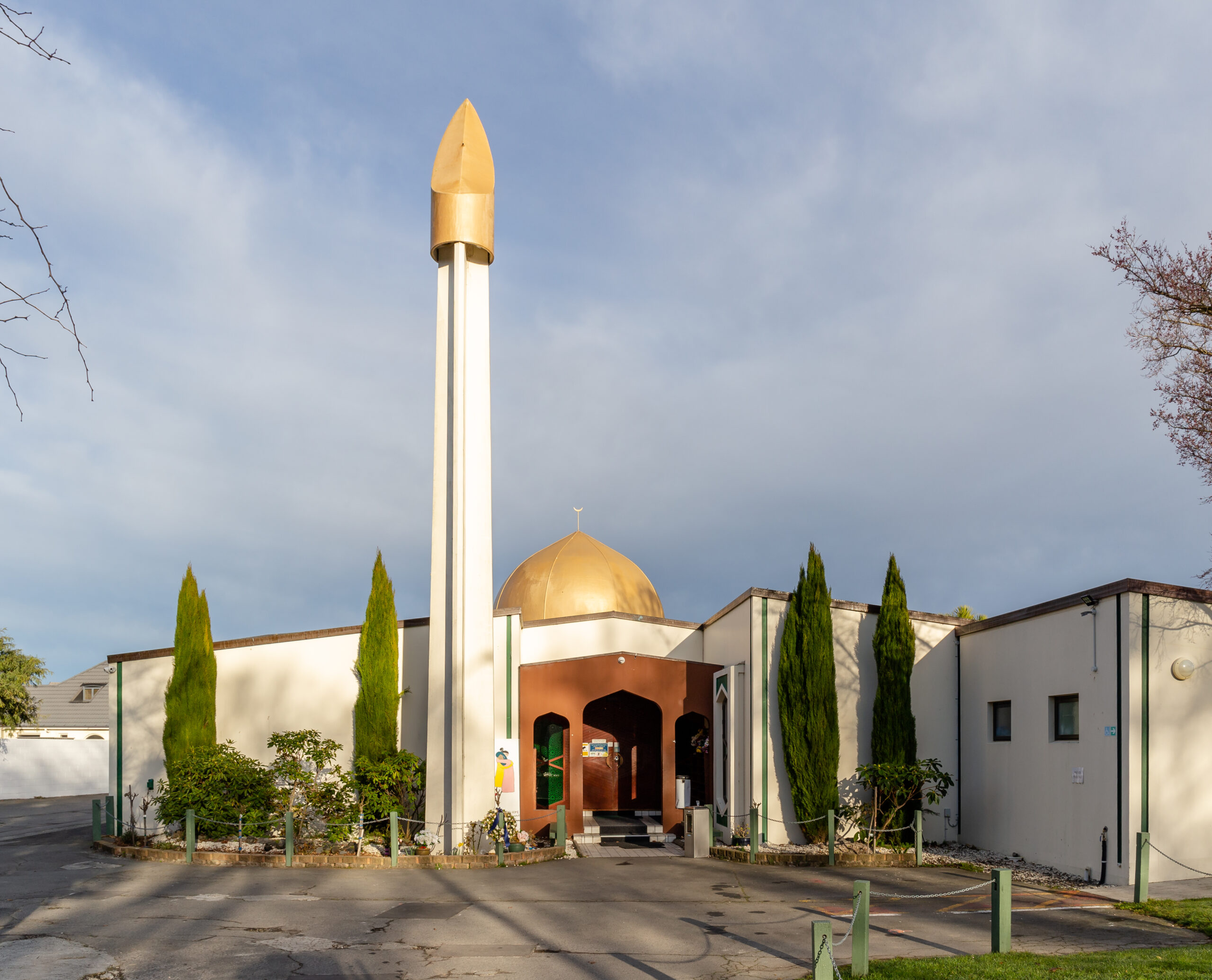





 Users Today : 0
Users Today : 0 Total views : 8440
Total views : 8440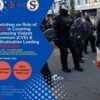
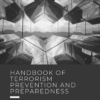

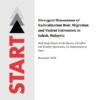
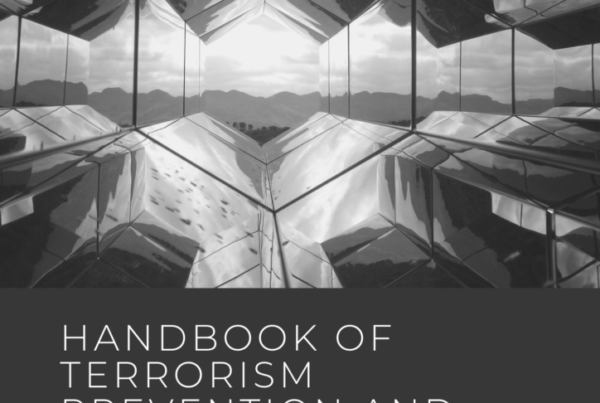
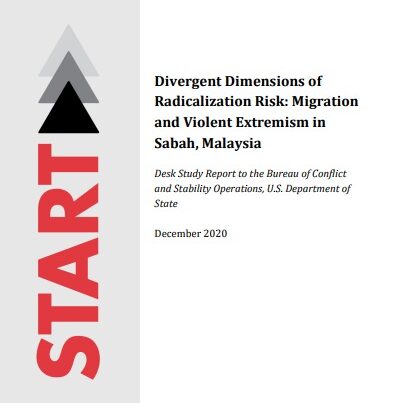
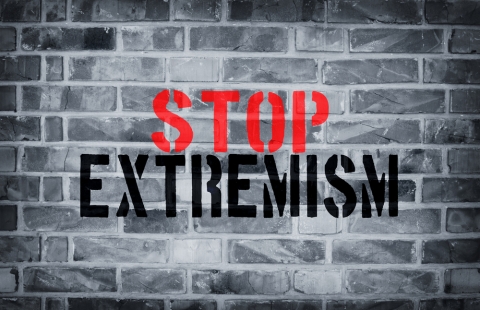
Recent Comments